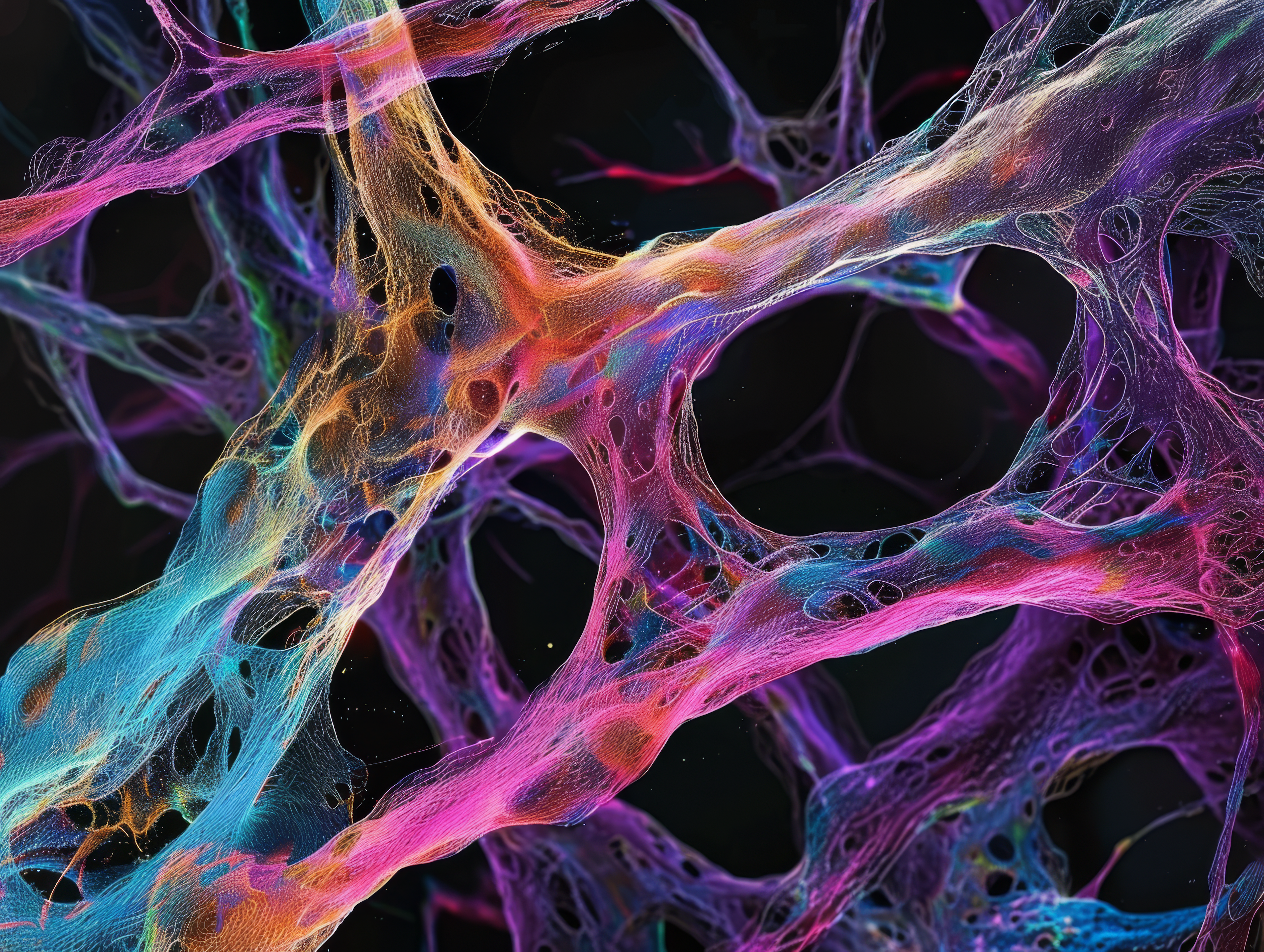Sensitive skin
Having sensitive skin is a common issue. A large meta-analysis (Chen et al., 2020) of 51,783 people across 18 different countries, found that around 70% of the people reported having skin sensitivities.
Where does sensitive skin come from?
Overall, the literature paints a complex picture of the mechanisms that drive sensitivity but there are a few clear hallmarks:
1. Disrupted skin barrier, with compromised lipid composition: A disrupted barrier allows more environmental pollutants, chemicals, and other molecules to penetrate into skin that shouldn’t. It also can trigger inflammation that heightens sensitivity.
2. A hyperactive local nervous system: The skin contains mast cells, specific immune cells that when triggered by things like stress, excrete inflammatory molecules into the tissue causing inflammation and heightened sensitivity reactions.
3. A delayed reactive immune response: Our immune system sometimes does not respond to the first encounter with an ingredient (or in the case of vaccines a virus / bacteria). With additional exposure an immune response is triggered which can show up as breakouts, dermatological conditions, and sensitivity.
What can trigger sensitive skin?
Sensitive skin has multiple triggers. Anything from weather conditions, air conditioning, cleaning products, personal care products, and clothing can act as a trigger. Emotional health, especially factors like stress can also trigger skin sensitivities. The skin contains mast cells, specific immune cells. These cells, when triggered by physiological reactions like stress excrete inflammatory molecules into the tissue causing inflammation and heightened sensitivity reactions.
Most sensitive skin issues are experienced on our face because of its exposure to the environment, a thinner skin barrier and greater density of nerve endings. The increase in treatments like peels, exfoliation (chemical and manual), and retinol based products are linked to increasing sensitivities because of their impact on the skin barrier and resurfacing mechanisms.
What ingredients can cause sensitivity?
Many different ingredients can trigger or cause reactivity and sensitivities, but here are a few of common sensitivity causing ingredients found in skincare products:
1. Retinoids: A powerful and effective ingredient for hyperpigmentation, acne, and others, Retiniods work by creating insult (or damage) to the skin to generate faster turnover. This retinoid induced damage, compromises the skin barrier and can trigger inflammation. It’s okay to have retinol in your regimen, just make sure you are pairing that with skin barrier repair and anti-inflammation to address the downsides of retinols.
2. Alpha-hydroxy acids (AHA’s): Another effective group of ingredients for skin resurfacing. Like retinol, they can compromise the skin barrier and trigger inflammation increasing sensitivity. Similar to retinol, AHAs can be in your routine, just use mindfully and balance with products that repair the skin barrier and reduce inflammation.
3. Propylene glycol: A humectant, Propylene Glycol is used in skincare products to help retain moisture in the skin. While generally recognized as safe, it is not recommended for use with sensitive skin as it is a known trigger especially for those with immune system based skin reactions and sensitivity.
4. Alcohols: The research is very clear that alcohols, specifically, SD alcohol, Isopropyl, and denatured alcohols are damaging to skin and generate inflammatory responses. Other alcohols, known as fatty alcohols i.e. stearyl and cetyl, can be beneficial and are not known to cause issues.
5. Fragrances: Multiple studies have shown fragrances, both natural and synthetic, are a sensitizing ingredient and a common irritant for sensitive skin.
How do you diagnose sensitive skin?
There are numerous tests to diagnose sensitive skin, like patch testing and ‘sting / scratch tests’ that measure the stinging sensation or redness that forms after a chemical irritant or scratch to skin. Trans-epidermal water loss (TEWL), a measure of skin barrier integrity, is often viewed as a proxy for sensitive skin because when the skin barrier is compromised skin allows more irritants to pass and has less natural protection from the environment. Though there is no clear scientific correlation between self-declared sensitive skin and TEWL that we have seen, we have noted that people with sensitive skin tend to have dryer skin, with an overall low fat content in skin. There is also evidence that the nervous system is more active and has a different overall architecture in people with sensitive skin.
What are the symptoms of sensitive skin?
Like there are multiple causes of sensitive skin, there are also multiple symptoms. Most studies show a large variation in the individual response or reaction to specific irritants, even among chemicals that operate on similar biological pathways within skin. Even when looking at markers associated with sensation of reactivity, there is a range. Some might experience redness, dryness or rashes, or more intense inflammatory responses.
Who is affected by sensitive skin?
Sensitive skin is experienced differently across gender, age, ethnicity, and culture. Many females experience increased skin sensitivity associated with their menstrual cycle, and there is an increase in skin sensitivity after menopause. Postmenopausal skin changes include skin thinning, loss of subcutaneous fat, change in neurosensory perception and vasculature – this might be part of the explanation for why 70% of women report their skin sensitivity increase at this stage in life.
Apart from the noted biological differences in skin, cultural traditions also impact self-perception of sensitive skin. In a large European study 80 to 90% of individuals surveyed in Portugal, Italy, and Spain, reported at least some skin sensitivity. In contrast, individuals surveyed in Germany, Belgium, and Switzerland reported 50–60%. Similarly, the term sensitive skin is a fairly recent term in Chinese culture and the majority of older women do not report having sensitive skin.
5 things you can do to help reduce or prevent sensitive skin.
1. Incorporate products that: Optimize lipid production, increase skin hydration, and strengthen the skin barrier.
2. Minimize inflammation in skin within anti-inflammatory ingredients like: Asparagopsis Armata extract, Bisabolol, Hordeum Vulgare Extract, and Hydrolyzed Algin.
3. Protect your skin barrier.
Use SPF - Always and forever.
Mindful Exfoliation, don’t overdo it.
Gentle cleansers don’t strip away essential oils and lipids
4. Protect blood vessel and nerve fiber integrity with ingredients like:
Opuntia Ficus-Indica Fruit Extract
Dipeptide-2
Hesperidin methyl chalcone
5. Indulge in antioxidant rich foods and ingredients
Topical ingredients like Vitamin C, Gamma Oryaznol, and Opuntia Ficus-Indica Fruit Extract
A polyphenol-rich diet (apples, berries, carrots etc.) can also improve sensitivity due to the increase antioxidant repository in skin
Flaxseed oil: a small clinical trial has shown some effect of daily intake of flaxseed oil has shown some effects on skin barrier which can help reduce sensitivity.
References:
Berardesca, E., M. Farage, and H. Maibach. "Sensitive skin: an overview." International journal of cosmetic science 35.1 (2013): 2-8.
Brenaut, E., et al. "Triggering factors in sensitive skin from the worldwide patients’ point of view: a systematic literature review and meta‐analysis." Journal of the European Academy of Dermatology and Venereology 34.2 (2020): 230-238.
Chen, W., R. Dai, and L. Li. "The prevalence of self‐declared sensitive skin: a systematic review and meta‐analysis." Journal of the European Academy of Dermatology and Venereology 34.8 (2020): 1779-1788.



